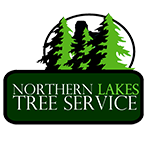Tree Health
The Essential Guide to Tree Health: Keeping Your Trees Thriving Year-Round
Trees play a vital role in our ecosystems and our communities. They provide shade, shelter, and beauty, purify the air, and are essential for biodiversity. However, trees are susceptible to various health challenges, from pests and diseases to environmental stressors. Understanding how to keep your trees healthy is essential for long-lasting, resilient landscapes. This guide explores the fundamentals of tree health, key factors that impact it, and ways to ensure your trees stay strong for years to come.

1. The Foundations of Tree Health
Soil Health and Nutrients: Healthy trees begin with healthy soil. Soil should be rich in nutrients and well-draining. Trees absorb essential nutrients—like nitrogen, phosphorus, and potassium—from the soil. Testing soil regularly can help identify any deficiencies and allow for amendments to be added as needed.
Watering and Hydration: Trees, especially young and newly planted ones, need consistent watering. Hydration is crucial during dry seasons or droughts, which may otherwise stunt growth and increase susceptibility to disease. However, avoid overwatering, as it can lead to root rot and other fungal diseases.
Proper Pruning and Maintenance: Pruning encourages strong structure, removes dead or diseased branches, and allows for better air circulation, which reduces the chances of fungal infection. However, over-pruning can stress a tree, making it more vulnerable. Aim to prune during dormancy or in seasons best suited for the tree species.
2. Common Tree Health Issues
Pests: Trees are susceptible to a variety of pests, such as borers, aphids, and beetles. Signs of pest infestation may include holes in the bark, leaf discoloration, and sap oozing. Integrated pest management (IPM) practices, such as introducing beneficial insects, can help control pest populations without excessive chemical intervention.
Diseases: Fungal, bacterial, and viral infections can harm trees. Common diseases include anthracnose (causing leaf spots and blights), canker (wounds and discolored bark), and root rot (which affects underground root systems). Diseased trees may show symptoms such as wilting, blackened leaves, or odd bark growths.
Environmental Stress: Trees are sensitive to environmental changes such as pollution, temperature extremes, and soil compaction. Urban trees are especially vulnerable, as they contend with limited space, vehicle emissions, and sidewalk constraints. Mulching around the base can help regulate soil moisture and temperature, offering some relief from these stresses.
3. Best Practices for Maintaining Tree Health
Planting the Right Tree in the Right Place: Choose tree species that are well-suited to your region's climate and soil conditions. Native species are typically more resilient to local pests and environmental factors than non-native ones. Trees should also be planted with enough space to grow freely and reach maturity without obstruction.
Implementing Regular Health Assessments: Professional tree inspections can help identify issues early on, such as weakened branches, disease onset, or pest infestation. Early detection allows for prompt intervention, reducing potential long-term damage.
Mulching: Mulch helps trees retain moisture, improve soil structure, and insulate roots. Apply a 2- to 4-inch layer of mulch around the base, but keep it from touching the trunk to prevent rot.
Fertilizing as Needed: Regular soil testing can reveal if a tree needs extra nutrients. However, trees that are fertilized too frequently may grow weaker branches and become more susceptible to pests. Fertilize only if necessary, and use slow-release formulas to avoid nutrient overload.
4. When to Call a Professional Arborist
If you notice signs like sudden leaf loss, wilting, or unusual bark changes, consulting an arborist is beneficial. They can diagnose issues, recommend treatments, and ensure that any interventions—like pest control, pruning, or disease management—are performed safely and effectively. Arborists are also valuable when planning tree removals or dealing with trees close to power lines, where safety considerations are paramount.
Conclusion
Tree health is a delicate balance of proper planting, consistent care, and awareness of potential threats. By practicing regular maintenance and understanding the common issues that affect trees, you can help ensure your trees thrive and add value to your property and ecosystem. Remember that trees, like all living organisms, require a proactive approach to health and care—one that ensures they continue to stand tall for decades to come.
For a free estimate or assessment, contact:
Damon M. Bretthauer
Phone: (208) 443-3600
Cell: (208) 610-3718
